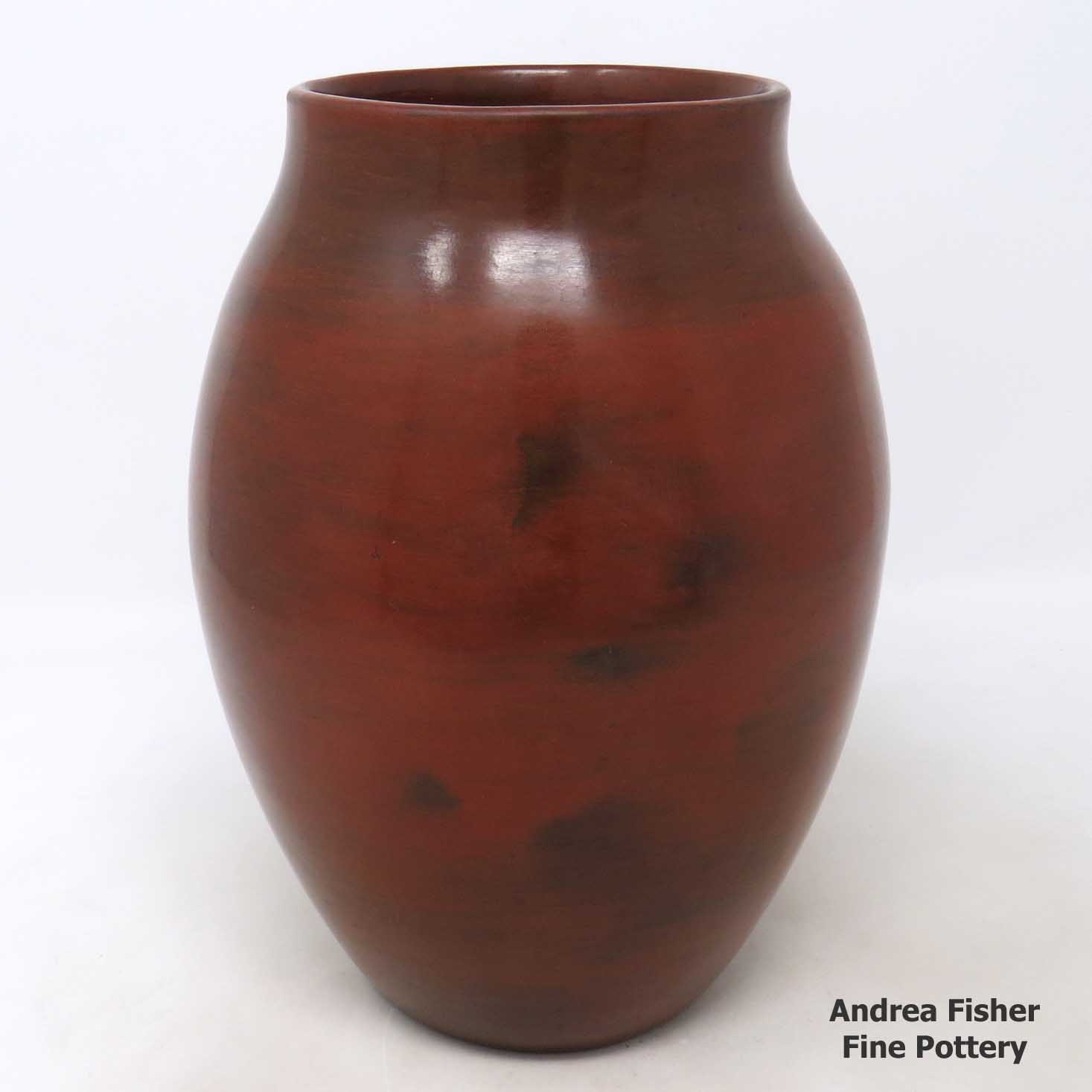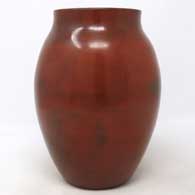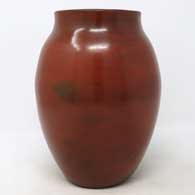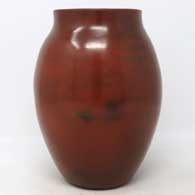(505) 986-1234 - www.andreafisherpottery.com - All Rights Reserved
Susie Williams Crank
Dineh (Navajo)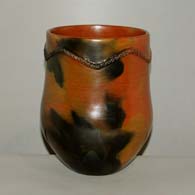
Susie Williams Crank credits her sister, Alice Cling, as being her pottery inspiration and primary teacher. Their mother, Rose Williams, recognized as the matriarch of modern Dineh pottery, taught both Alice and Susie as they were growing up but Alice was more interested than Susie in those days, Susie's interest sparked later in life.
Created at her home in Shonto, AZ, Susie's pottery is entirely hand-made, from digging and preparing the clay to hand coiling the pot to burnishing and decorating it and finally to firing it in a wood fire. Her polished redware pottery is thin-walled, well proportioned and highly symmetrical with a well-burnished surface, often decorated with a biyo' (a traditional decorative fillet around the rim). The firing produces beautiful color variations (called fire clouds) that range from red to orange and brown to black tones. Firing also brings out subtle shades introduced during the burnishing process by the way the stone is held and how it is moved across the surface of the pot. After firing she finishes her pots with a coat of hot pine pitch.
She signs her work: "Susie W Crank Navajo" or "Susie Williams Navajo" on the bottom.
Dineh
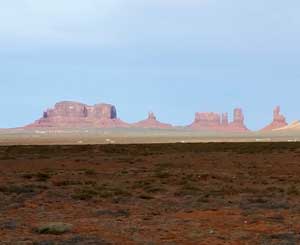
A view in Monument Valley
The Dineh refers to themselves as "Dineh" because the word means "the People" in their language. "Navajo" is a name that was given to them by the early Spanish. Historical and archaeological evidence points to the Dineh people entering the Southwest around 1400 CE. Their oral history still contains stories of that migration as the journey began in eastern Alaska and northwestern Canada centuries after their ancestors made the journey across the Bering Land Bridge from central Asia about 10,000 years ago. They were primarily hunter-gatherers until they came into contact with the Pueblo peoples and learned the basics of survival in this drier climate. Dineh oral history points to a long relationship between the Dineh and the Puebloans as they learned from and traded with each other.
When the Spanish first arrived, the Dineh occupied much of the area between the San Francisco Peaks (in Arizona), Hesperus Mountain and Blanca Peak (in Colorado) and Mount Taylor (in New Mexico). Spanish records indicate they traded bison meat, hides and stone to the Puebloans in exchange for maize and woven cotton goods. It was the Spanish who brought sheep to the New World and the Dineh took to sheep-herding quickly with sheep becoming a form of currency and sign of wealth.
When the Americans arrived in 1846, things began to change. The first fifteen years were marked by broken treaties and increasing raids and animosities on both sides. Finally, Brigadier General James H. Carleton ordered Colonel Kit Carson to round up the Dineh and transport them to Bosque Redondo in eastern New Mexico for internment. Carson succeeded only by engaging in a scorched earth campaign in which his troops swept through Dineh country killing anyone carrying a weapon and destroying any crops, livestock and dwellings they found. Facing starvation and death, the last band of Dineh surrendered at Canyon de Chelly.
Carson's campaign then led straight into "the Long Walk" to Bosque Redondo, a 300-mile trek during which at least 10% of the people died along the way. At Bosque Redondo they discovered the government had not allocated an adequate supply of water, livestock, provisions or firewood to support the 4,000-5,000 people interned there. The Army also did little to protect them from raids by other tribes or by Anglo citizens. The failure was such that the Federal government and the Dineh negotiated a treaty that allowed the people to return to a reservation that was only a shadow of their former territory little more than a couple years after they had left. However, succeeding years have seen additions to the reservation until today it is the largest Native American Reservation in the 48 contiguous states.
Large deposits of uranium were discovered on the Navajo Nation after World War II but the mining that followed ignored basic environmental protection for the workers, waterways and land. The Dineh have made claims of high rates of cancer and lung disease from the environmental contamination but the Federal government has yet to offer comprehensive compensation.
As a semi-nomadic tribe, the Dineh never made much pottery, preferring to use baskets for most storage purposes. They did produce a small amount of pottery for ceremonial uses. Once they were settled on a reservation, pottery began to make more sense. From a beginning making simple wares for colonial estates they transformed their pottery into art. After 1950 Cow Springs brownware began to appear on the market. A trader named Bill Beaver was in Shonto back then, encouraging local potters to "make something different" and the market in the outside world responded positively to those different creations.
Rose Williams is considered the matriarch of modern Dineh pottery. She learned from Grace Barlow (her aunt) and passed her knowledge and experience on to her daughters and many others. Today, most Dineh pottery is heavy, thick-walled and coated with pine pitch (a sealer they also use on many of their baskets). Most Dineh pottery has little in the way of decoration but many pieces have a biyo' (a traditional decorative fillet) around the rim. Unlike Puebloan potters, Dineh potters do not grind up old pot sherds and use them for temper in creating new pottery. Their religion says those pot sherds are infused with the spirits of their ancestors and that forbids the reuse of the material. Similarly, Dineh religion limits Dineh potters to using primarily Dineh carpet designs in the decoration of their pots.
Dineh potters have also created a panoply of folk art, including unfired clay creations called "mud toys." Other Dineh potters, like Christine McHorse, have graduated into the mainstream of American Ceramic Art and easily compete among the finest ceramic artists on Earth.
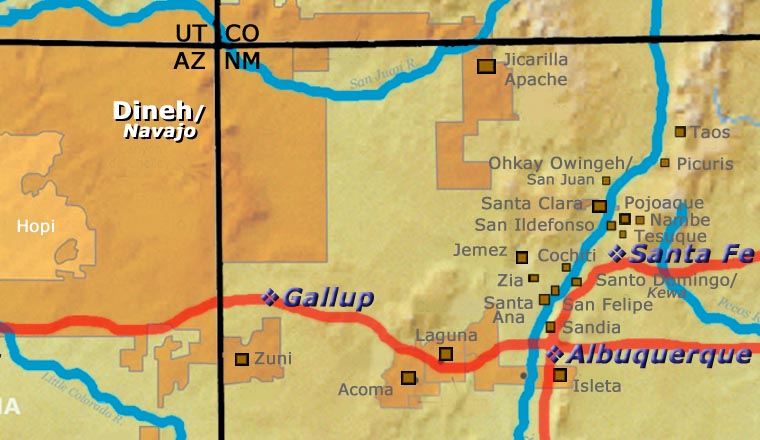
Navajo Nation at Wikipedia
The Dineh people at Wikipedia
Navajo Nation Government official website
Rose Williams Family Tree
Dineh (Navajo)
Disclaimer: This "family tree" is a best effort on our part to determine who the potters are in this family and arrange them in a generational order. The general information available is questionable so we have tried to show each of these diagrams to living members of each family to get their input and approval, too. This diagram is subject to change should we get better info.
- Rose Williams (1915-2015), learned to make pottery from her aunt, Grace Barlow
- Alice Cling (1946-)
- Michelle Williams (c. 1970-)
- Susie Williams Crank & Lorenzo Spencer
- Sue Ann Williams (1956-)
- Andrea Williams
- Lorraine Williams-Yazzie (1955-)(daughter-in-law)
- Stuart Roy (son-in-law)
Some of Rose's students: - Louise Goodman (1937-2015)
- Silas Claw (1913-2002) & Bertha Claw (1926-2022?)
- Faye Tso (1933-2004)
- Lorena Bartlett
- Betty (Barlow) Manygoats (learned to make pottery from her paternal grandmother, Grace Barlow)
- Elizabeth Manygoats
- Larrisena Manygoats
- Evelyn Manygoats and Jonathan Chee
Some of the above info is drawn from Navajo Folk Art, by Chuck and Jan Rosenak, © 2008, Rio Nuevo Publishers
Other info is derived from personal contacts with family members and through interminable searches of the Internet.
Copyright © 1998-2024 by


